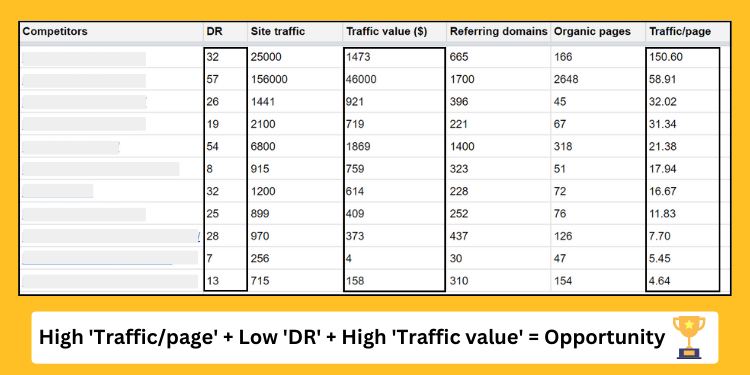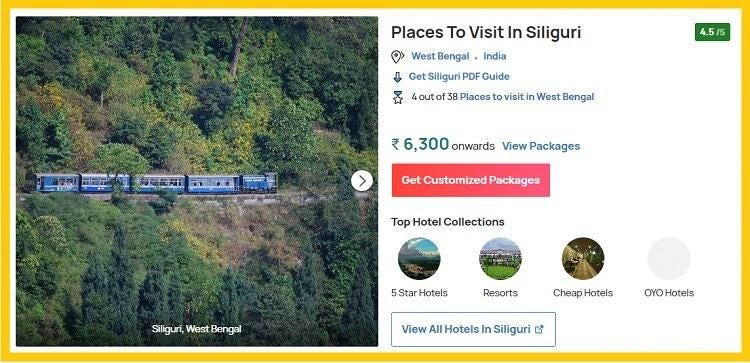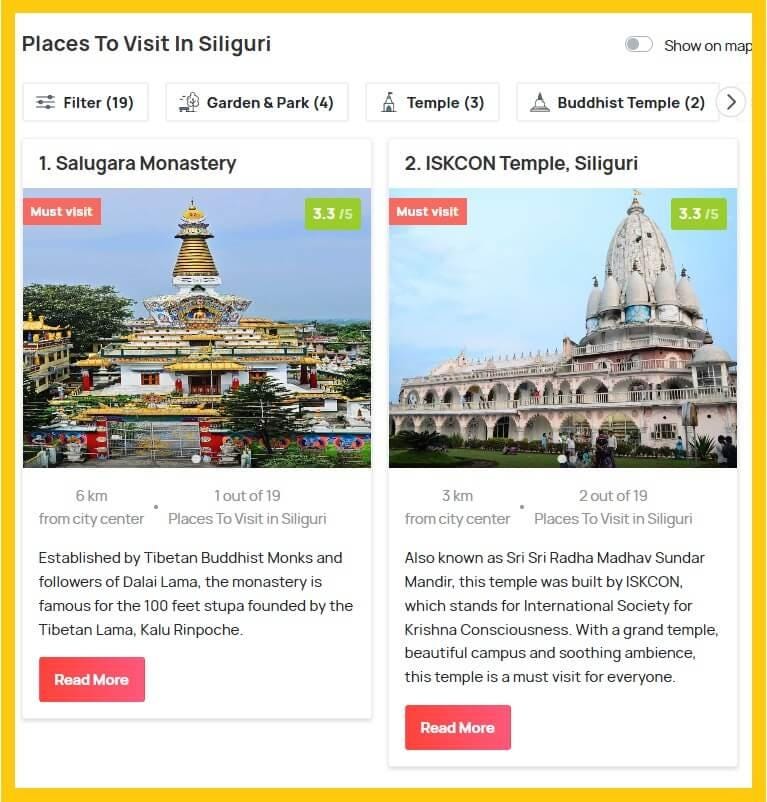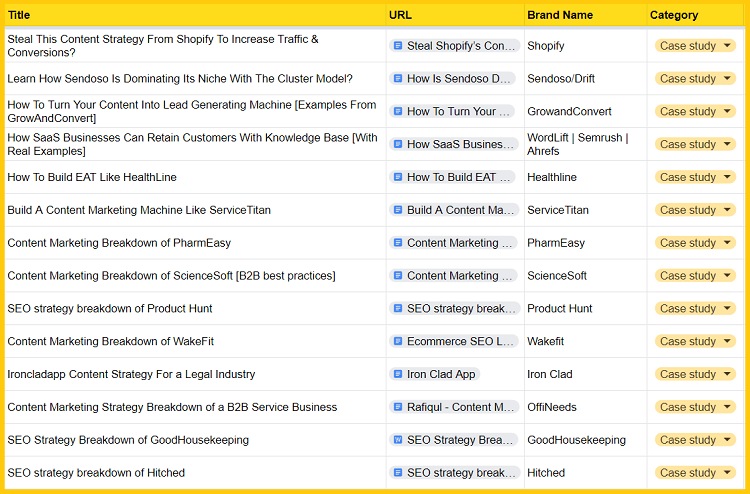🎯 Actionable insights
💡 1. Find low-competitive keywords using content competitor analysis
Doing content competitor analysis, you find keyword goldmines and sites you can easily outrank.
Here’s how to find them in 4 simple steps:
Step 1. Identify content competitors
Product competitors ≠ content competitors; Type important keywords in Google and check out the top-ranking sites.
Also, to filter out the results, pick sites with topical authority in your niche.
For example:
If you Google 'Data science courses' and if sites like Medium are ranking on the first page, do not consider medium.com as your content competitor.
Instead, sites like Coursera and Simplilearn are your real competitors in SEO.
Step 2. Get key metrics
Use Ahrefs or any similar SEO tool to find the following metrics:
DR
Site traffic
Traffic value
Referring domains
Organic pages
Step 3. Calculate content efficiency
It refers to the average traffic per page (= site traffic/organic pages).
This helps you find sites that have less content but higher traffic.
Finally, the sheet will look like this:
Step 4. Use filters and sort the table
It's time to find SEO opportunities.
From the sheet, find sites with the following:
Low DR
High traffic value
High traffic/page
This will give you a list of sites that are performing well in your niche instead of having less number of quality links.
Next, you can explore their content types, keywords they are ranking for, etc.
Want more SEO insights and case studies of high-growth sites?
👉 Join Content Marketing VIP club membership
💡 2. How Holidify is nailing the blog UX to drive traffic and conversions
Holidify is nailing the blog UX to drive conversion from informational content.
From ‘above the fold section’ to page structure, everything is focused on driving conversion or clicks to their money pages.
Here’s how:
Google ‘best places to visit in Siliguri,' and you'll see that most of the top-ranking pages are listicle posts.
Their page structure looks similar to this:
Title
Featured image
Introduction
Lists of top places
CTA between the lists
Conclusion
On the other hand, Holidify optimizes its blog UX to maximize clicks from its blog content.
Here’s what the above-the-fold section looks like:
The 'above the fold' (ATF) section is the first thing a user notices when they land on the page.
Here, Holidify uses destination packages as a primary destination.
That means if you're on a page related to 'Goa,' the primary CTA will link to the 'Goa tour packages.'
In fact, the ATF section also links to related money pages, such as hotel and resort collections.
In addition, Holidify focuses on providing better blog UX than most of its competitors.
For example:
Instead of following long listicle posts, Holidify uses filters so users can customize their places by type (gardens, shopping, etc.)
This significantly improves the user experience and reduces ‘time to value.’
TL;DR
Optimize the 'above the fold' section of blog pages with personalized CTA or internal links.
Aim for as low ‘time to value’ as possible (It is the time required for users to get desired information, answers, and solutions from a page)
👉 Insights from Sk Rafiqul Islam (Let’s connect on LinkedIn)
If you like the SEO and content marketing so far, I'd really appreciate 🙏 it if you can share this newsletter issue on social media.
(Continue reading…)
⭐ Unlock SEO breakdowns of high-performing sites in search
When you join the Content Marketing VIP club, you'll unlock 30+ resources on:
SEO case studies
In-depth guides (EAT, Blog UX, Content briefs, etc.)
SEO audit
Frameworks and SOPs
You’ll also get access to new content going forward.
This should be expensive, right?
The content marketing VIP club has a yearly membership option which costs you only $27 annually.
That means you'll spend around only ₹6 per day to reach the top category of SEOs 🏆.
Now, the choice is yours 👇
👉 Join Content Marketing VIP club membership
💬 Bite-sized insights
💡 1. Become a better SEO by analyzing high-growth sites
An underrated way to improve your SEO understanding is by analyzing the SEO strategies of high-growth sites.
This is not an alternative to the ‘learn by doing’ approach.
But this will help you understand real-world challenges and how successful sites have dealt with them.
Here’s how:
1. Pick a high-growth website from any preferred category (eCommerce, SaaS, B2B, etc.)
2. Analyze the website with one clear question: why does this site succeed in SEO?
3. List down every possible factor that you think has contributed to the SEO growth
Example: For eCommerce sites, possible factors are optimized product and category pages, site structure, faceted navigation, etc.
4. Question everything
Example: If a site's home page links to service pages, question why this is so. Is there any SEO or UX benefit?
5. Create the report and share it on social platforms with experts to seek feedback. Or, ask experts to get their suggestions.
6. Read other SEO case studies or teardowns to see which points you’ve missed in your report.
7. Repeat the process
In the end, you will only predict and evaluate strategies that might have contributed significantly to their SEO.
But in this journey, you'll learn many new things — how sites in different industries operate, common strategies used by top sites, etc.
From ProductHunt to Mailchimp, I’ve written 30+ SEO strategy breakdowns highlighting their SEO strategies and tactics.
And this helped me to learn what competitors are doing and where we can make SEO improvements.
Hope this helps you to become a better SEO.
👉 Access all the SEO case studies right here.
💡 2. Never skip audience research in SEO projects
Before starting an SEO project, spend hours understanding products, audience profiles, and brand positioning.
This will not help you find low-competitive keywords but will surely differentiate your content and SEO strategy from others.
For example, I spend hours digging into the forums, Quora, SEO tools, and social media to find questions that my audience might have.
Skip this step, and your SEO strategy will be too similar (copy-cat) to your competitors.
👉 Insights from Sk Rafiqul Islam (Let’s connect on LinkedIn)






